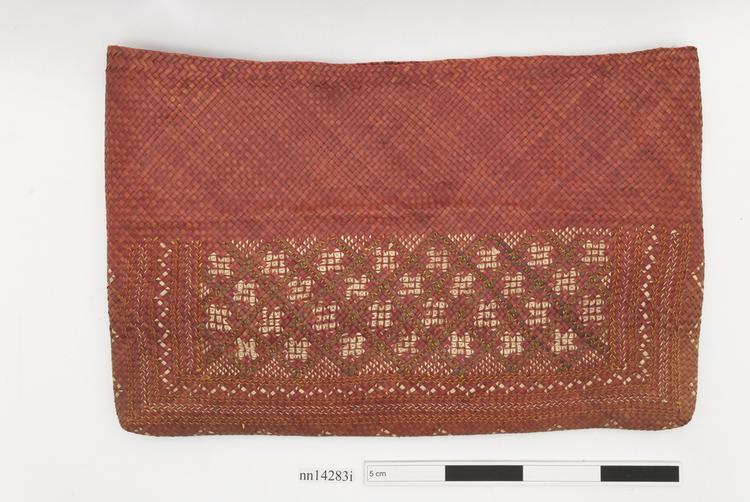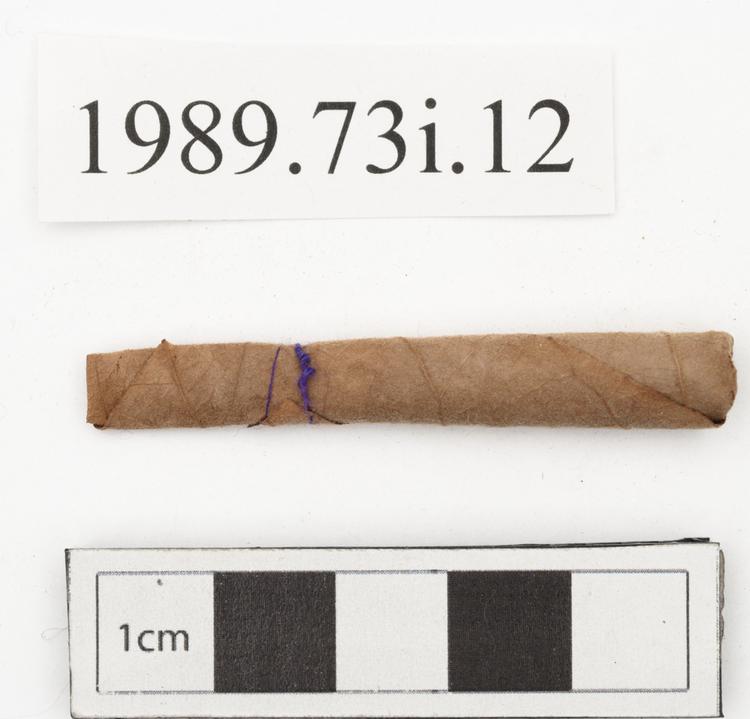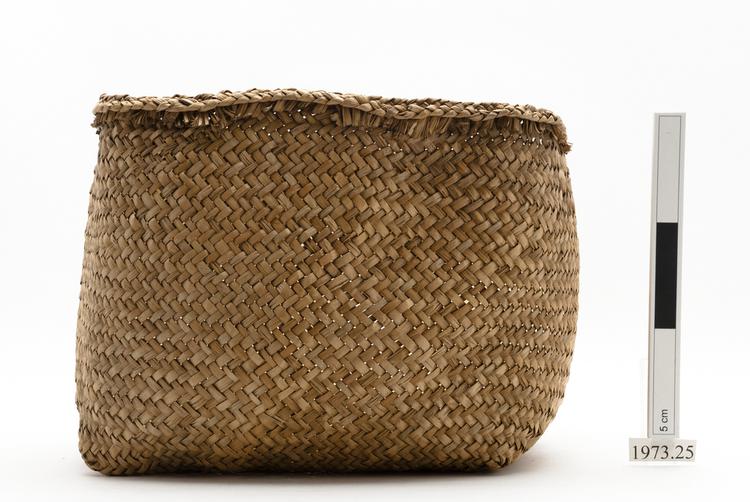Bogolan decorated top, with round neck with downward slash, pocket on the front, and fringes around bottom and sleeves. Yellow with dark brown decoration showing two figures in masquerade costume on both back and front, and geometric and floral designs. The tradition of mud died cloth (Bogolan) is widespread in Mali. Tops like this decorated with Kanaga masks and other symbols of Dogon identity were frequently worn by young men of the region at the turn of the 21st century.
Contemporary tunic decorated using the bogolan (mud-cloth) method. The figures on the front and back are Dogon masked dancers, carrying the Kanaga mask. One interpretation of the kanaga is that it refers to the bird that guided the Dogon speaking peoples from the Mandigo region to their present location (the extensions to the left and right recall the spreaded wings of a bird). This interpretation is apparently used for non-initiates. The other interpretation is that it symbolises both God (the upper arms and lower legs) and the two universes: lower earth and upper sky.






